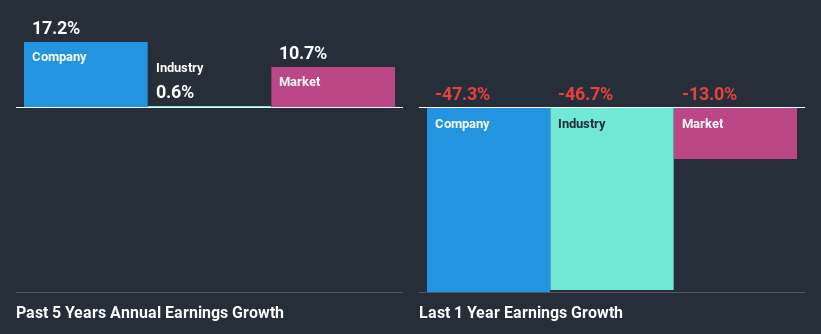Declining Stock and Decent Financials: Is The Market Wrong About AB Dynamics plc (LON:ABDP)?
AB Dynamics (LON:ABDP) has had a rough month with its share price down 13%. But if you pay close attention, you might find that its key financial indicators look quite decent, which could mean that the stock could potentially rise in the long-term given how markets usually reward more resilient long-term fundamentals. In this article, we decided to focus on AB Dynamics' ROE.
Return on equity or ROE is a key measure used to assess how efficiently a company's management is utilizing the company's capital. In short, ROE shows the profit each dollar generates with respect to its shareholder investments.
Check out our latest analysis for AB Dynamics
How Is ROE Calculated?
Return on equity can be calculated by using the formula:
Return on Equity = Net Profit (from continuing operations) ÷ Shareholders' Equity
So, based on the above formula, the ROE for AB Dynamics is:
4.4% = UK£4.6m ÷ UK£103m (Based on the trailing twelve months to August 2020).
The 'return' is the amount earned after tax over the last twelve months. So, this means that for every £1 of its shareholder's investments, the company generates a profit of £0.04.
What Is The Relationship Between ROE And Earnings Growth?
We have already established that ROE serves as an efficient profit-generating gauge for a company's future earnings. Based on how much of its profits the company chooses to reinvest or "retain", we are then able to evaluate a company's future ability to generate profits. Generally speaking, other things being equal, firms with a high return on equity and profit retention, have a higher growth rate than firms that don’t share these attributes.
AB Dynamics' Earnings Growth And 4.4% ROE
At first glance, AB Dynamics' ROE doesn't look very promising. Next, when compared to the average industry ROE of 5.7%, the company's ROE leaves us feeling even less enthusiastic. However, the moderate 17% net income growth seen by AB Dynamics over the past five years is definitely a positive. We reckon that there could be other factors at play here. For example, it is possible that the company's management has made some good strategic decisions, or that the company has a low payout ratio.
As a next step, we compared AB Dynamics' net income growth with the industry and found that the company has a similar growth figure when compared with the industry average growth rate of 17% in the same period.
Earnings growth is an important metric to consider when valuing a stock. It’s important for an investor to know whether the market has priced in the company's expected earnings growth (or decline). By doing so, they will have an idea if the stock is headed into clear blue waters or if swampy waters await. Is AB Dynamics fairly valued compared to other companies? These 3 valuation measures might help you decide.
Is AB Dynamics Efficiently Re-investing Its Profits?
AB Dynamics has a low three-year median payout ratio of 10%, meaning that the company retains the remaining 90% of its profits. This suggests that the management is reinvesting most of the profits to grow the business.
Besides, AB Dynamics has been paying dividends over a period of seven years. This shows that the company is committed to sharing profits with its shareholders. Our latest analyst data shows that the future payout ratio of the company over the next three years is expected to be approximately 8.4%.
Conclusion
On the whole, we do feel that AB Dynamics has some positive attributes. Even in spite of the low rate of return, the company has posted impressive earnings growth as a result of reinvesting heavily into its business. Having said that, looking at the current analyst estimates, we found that the company's earnings are expected to gain momentum. To know more about the latest analysts predictions for the company, check out this visualization of analyst forecasts for the company.
This article by Simply Wall St is general in nature. It does not constitute a recommendation to buy or sell any stock, and does not take account of your objectives, or your financial situation. We aim to bring you long-term focused analysis driven by fundamental data. Note that our analysis may not factor in the latest price-sensitive company announcements or qualitative material. Simply Wall St has no position in any stocks mentioned.
Have feedback on this article? Concerned about the content? Get in touch with us directly. Alternatively, email editorial-team (at) simplywallst.com.

